Words Amicia de Moubray Photographs Lisa Valder and others
As we approach the 100th anniversary of the end of World War I, I urge you, dear reader, to make your way to Murston Old Church, on the outskirts of Sittingbourne, where you will find a highly original and imaginative memorial celebrating this momentous date in the most unlikely environment. A voluptuous stream of poppies cascades from the east window of the only surviving fragment of a medieval church in Stadium Road (by the Greyhound Track) amidst an industrial park. It is an arresting sight. There is also a tree hung with CDs painted with poppies dancing in the wind. But it gets even better – on close inspection it transpires that the poppies are ingeniously fashioned out of discarded plastic bottles. ‘You can make two flowers with one bottle if you use both ends,’ says artist Sioux Peto.
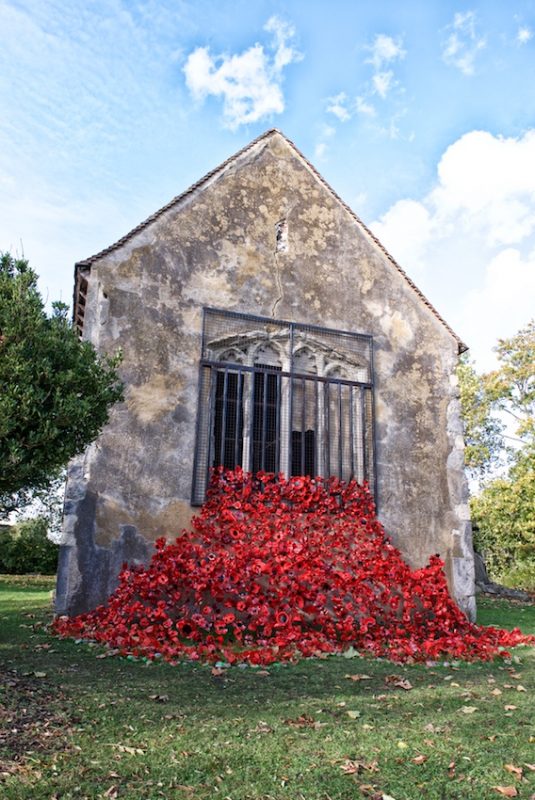
The Murston HeArt Poppy Project at Murston Old Church, nr Sittingbourne

Sioux Peto
On Saturday 10 November between 5.30pm and 7.30pm local artist Karen Crosby will be projecting images of the First World War on the side of the church. The church will be open from 1pm. There will also be a programme of music by Lis Bayford and Christine Adams as well as the men’s choir, Lowering the Tone, singing a medley of reflective songs and First World War songs. It is a drop-in event.
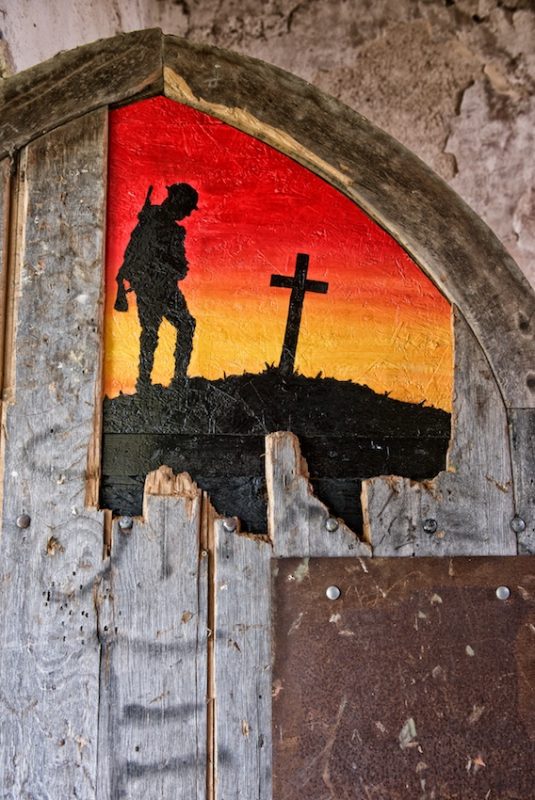
A haunting image of the First World War painted on the church door by Sioux Peto
What is this mysterious place, one may well ask? At the beginning of the 19th century Murston was a small farming community with a few oyster fisheries and a commanding view over the Swale Estuary and the surrounding marshes. The name is believed to be derived from Marsh Town, due to its proximity to the marshes. The medieval church of All Saints was probably built in the 12th century. But in the 19th century the area became increasingly industrialized, isolating the church in a miasma of brick and gas works. This led to a new church being built half a mile away in 1873. It is a little-known work by William Burgess, architect of the extraordinary Castell Coch designed for the eccentric Marquess of Bute near Cardiff. The old church was demolished, leaving the central chancel to be retained as a mortuary chapel. The church’s altar, one of its bells, sundry corbels and three of its pillars were incorporated in the new church. It has had a chequered history ever since, being subject on numerous occasions to wanton vandalism.
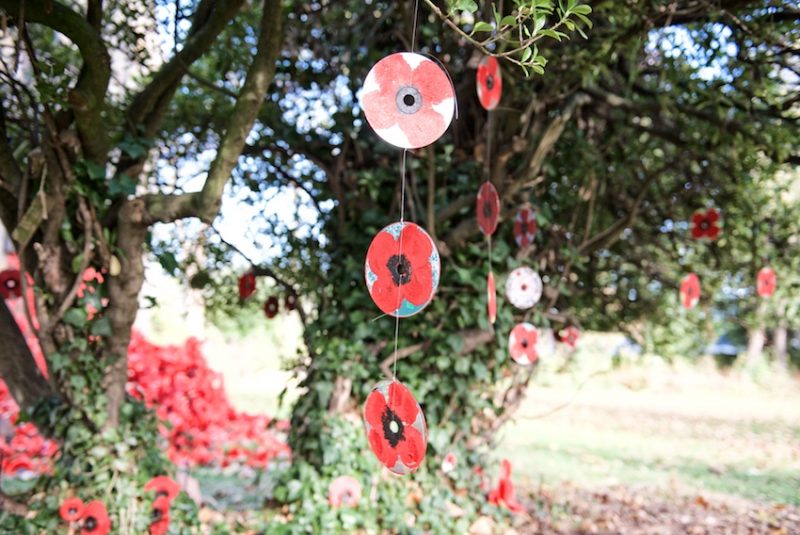
CDs painted with poppies hanging on a tree in the churchyard
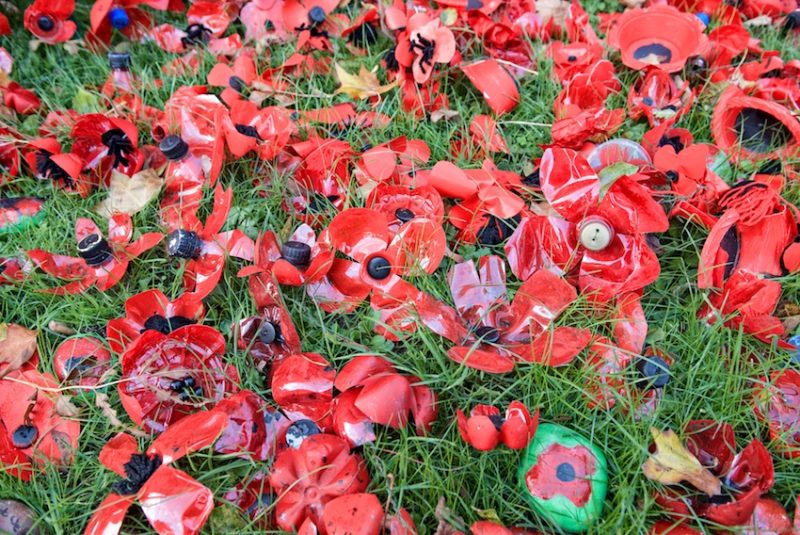
Each poppy is different.
Hurrah for the late Michael Nightingale, a noted local antiquarian, who was determined that the building should be preserved as a sanctuary of peace and contemplation. In the 1970s he arranged for essential works, including retiling, and instigated an annual service. It was briefly used by the Murston and Bapchild Scouts but, alas, vandals continued to wreak havoc and the church service was abandoned. Determined as ever the valiant Michael Nightingale persuaded the fellow trustees of his family trust, the Cromarty Arts Trust, to retile the roof for a second time in the 1990s.
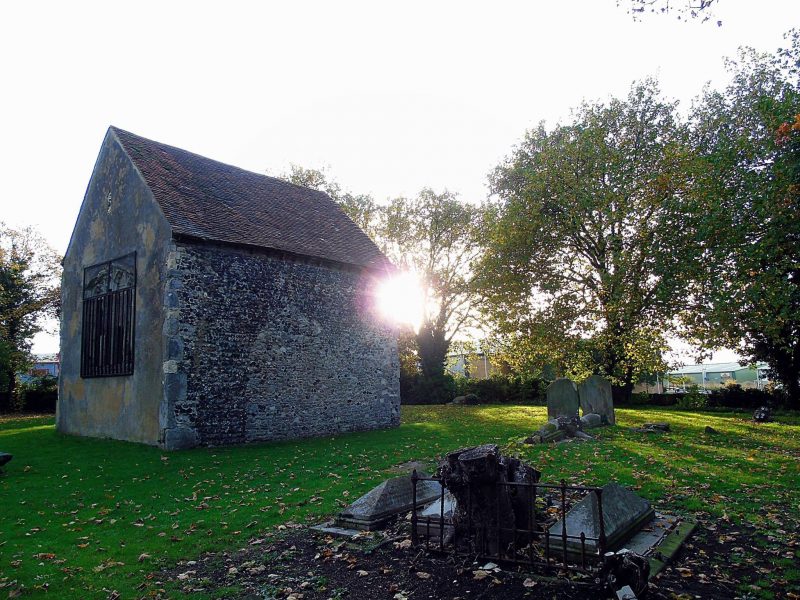
A view across the churchyard
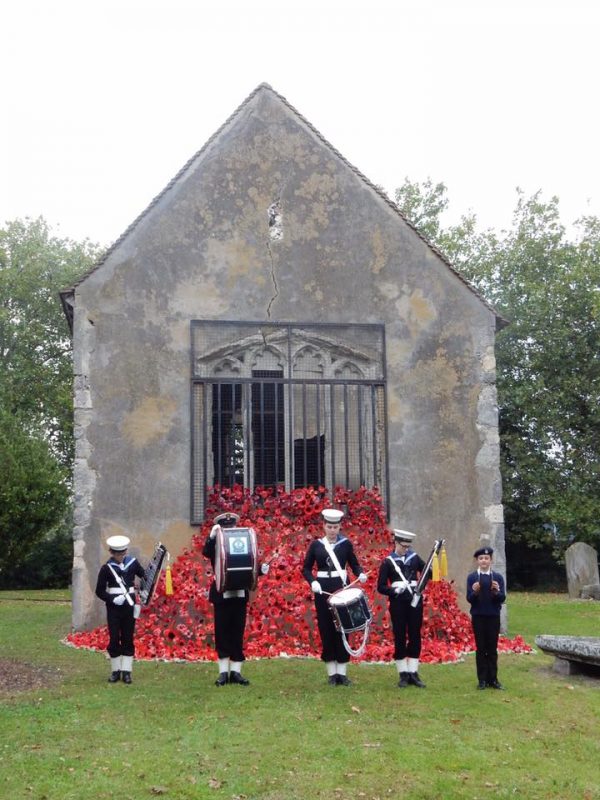
Sittingbourne Sea Cadets
In 2014 the All Saints Murston Trust was founded and the current saviours of the church, Sioux and her partner, sculptor, Colin Barnard, set up Murston heArt to rescue it. Their ambitious plans are to make it a cultural hub for the area, with a new building in the churchyard containing studio spaces, offices and a café. Colin describes it as ‘a little green oasis in a concrete and steel giant.’ Sioux adds: ‘In the summer local workers like to come and sit in the churchyard in their lunch breaks.’ A graphic designer by training, Sioux is passionate about recycling and upcycling and organises an impressive range of imaginative activities at the church for all ages. Details of the events are regularly posted on the website. She also runs Polka Dots Arts in Teynham.
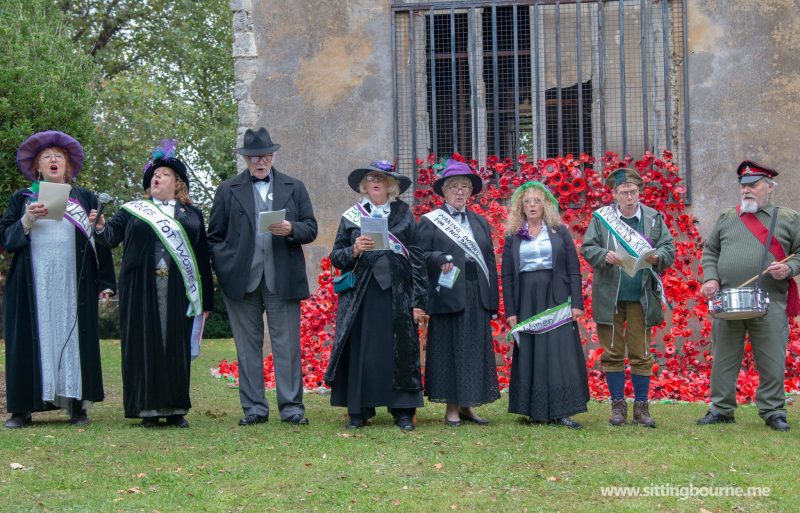
Big Fish Theatre Project
Inspired by the sea of poppies at the Tower of London, the Murston Art Poppy Project was dreamt up by Sioux in 2017. Passionate about environmental art and engaging with the local community, she organised 47 poppy making workshops throughout Swale in schools and local groups, including South Avenue Primary, Sittingbourne and the Sheppey Ladies Group.
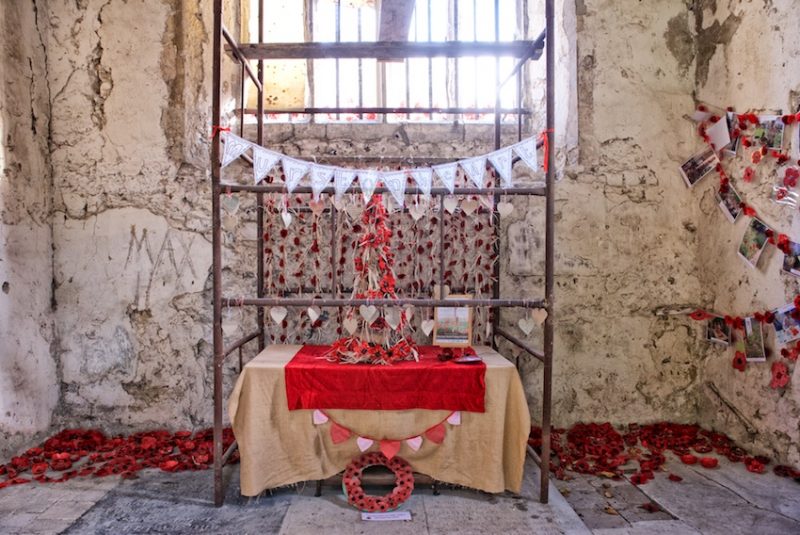
The interior of the church with a special poppy installation
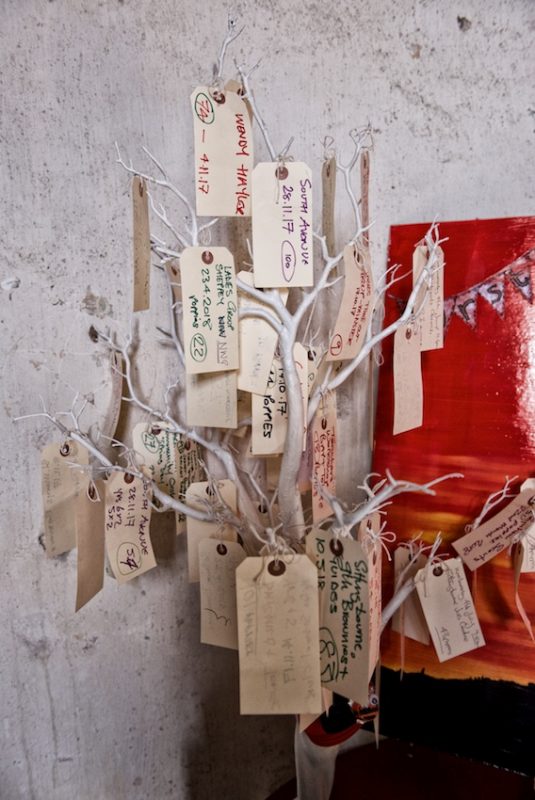
Each label represents a poppy making workshop
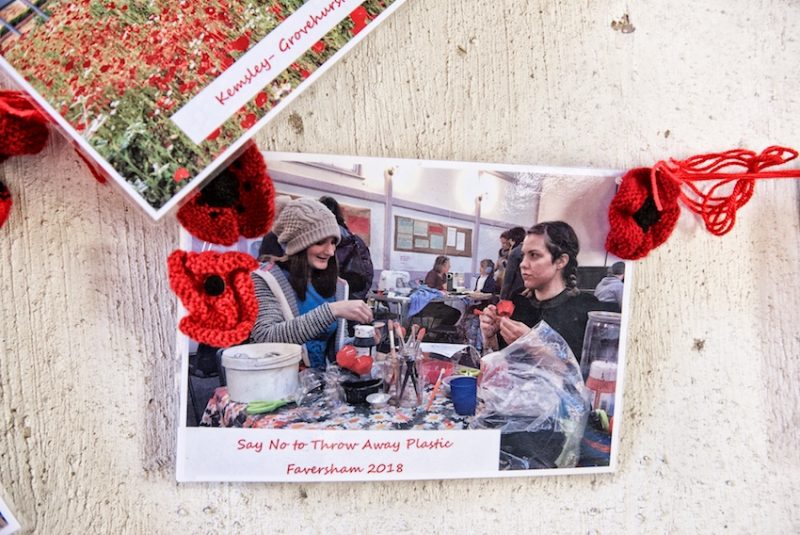
A poppy making workshop
The result is this wonderful installation. The poppies, painted with acrylic paint, have a variety of different centres made with buttons and black pipe cleaners and are strung together with florists’ wire. ‘We are a bit alternative here,’ says Sioux.
Catch the installation before its dismantlement which will commence at 11 past 11 on 11 November.